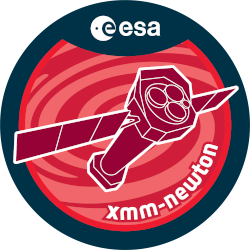

| Proposal ID | 011090 |
| Title | Starburst galaxies: Detailed comparison of the X-ray disk/halo connection SSC_29 |
| Download Data Associated to the proposal | https://nxsa.esac.esa.int/nxsa-sl/servlet/data-action-aio?obsno=0110900101 |
| DOI | https://doi.org/10.5270/esa-vah741r |
| Principal Investigator, PI | Dr Michael Watson |
| Abstract | GT- We propose XMM observations of the prototypical starburst galaxies NGC253 (nuclear starburst) and NGC 4631 (starburst from the inner disk).Existing Einstein and ROSAT studies showed soft X-ray halos, extendingfor more than 20 arcmin perpendicular to the major axes of both galaxies.We wish to address several follow up questions like detailed temperatureprofiles in the halos and the fine structure (plumes, supershells,fountains) of the disk/halo transition zone. In addition, XMMobservations will enable the separation of SNRs, superbubbles and XRBsbased on their X-ray signature (color, spectra, time variability).For highest sensitivity the NGC 253 pointing is offset to the NW halo. |
| Publications |
|
| Instrument | EMOS1, EMOS2, EPN, OM, RGS1, RGS2 |
| Temporal Coverage | 2000-12-13T23:37:50Z/2002-06-28T22:05:53Z |
| Version | 17.56_20190403_1200 |
| Mission Description | The European Space Agencys (ESA) X-ray Multi-Mirror Mission (XMM-Newton) was launched by an Ariane 504 on December 10th 1999. XMM-Newton is ESAs second cornerstone of the Horizon 2000 Science Programme. It carries 3 high throughput X-ray telescopes with an unprecedented effective area, and an optical monitor, the first flown on a X-ray observatory. The large collecting area and ability to make long uninterrupted exposures provide highly sensitive observations. Since Earths atmosphere blocks out all X-rays, only a telescope in space can detect and study celestial X-ray sources. The XMM-Newton mission is helping scientists to solve a number of cosmic mysteries, ranging from the enigmatic black holes to the origins of the Universe itself. Observing time on XMM-Newton is being made available to the scientific community, applying for observational periods on a competitive basis. |
| Creator Contact | https://www.cosmos.esa.int/web/xmm-newton/xmm-newton-helpdesk |
| Date Published | 2003-07-30T00:00:00Z |
| Last Update | 2025-08-04 |
| Keywords | "time variability", "major axes", "fine structure plumes", "halo transition zone", "arcmin perpendicular", "xray signature color", "temperature profiles", "ngc 253", "XMM", "soft xray halos", "existing einstein", "xray disk", "nw halo", "halo connection ssc_29", "starburst galaxy", "ngc 4631 starburst", "inner disk", "ROSAT", "NGC", "supernova remnant" |
| Publisher And Registrant | European Space Agency |
| Credit Guidelines | European Space Agency, Dr Michael Watson, 2003, 'Starburst galaxies: Detailed comparison of the X-ray disk/halo connection SSC_29', 17.56_20190403_1200, European Space Agency, https://doi.org/10.5270/esa-vah741r |